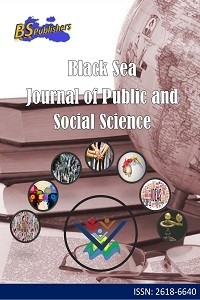
Black Sea Journal of Public and Social Science
Yazarlar: ["Hidayet TAŞ", "İsmail YURDAKUL", "Ali BOZDEMİR", "Rahime Aydın ERDOĞAN", "Ela ERDEN", "Bilal CEYLAN"]
Konular:-
DOI:10.52704/bssocialscience.1171829
Anahtar Kelimeler:Quarantine,Pandemic,Domestic violence,Covit-19,Tarsus
Özet: After COVID-19, which took hold of the world when the least expected, was declared as a pandemic, quickly made its presence felt throughout the world, and this sudden evolvement undoubtedly affected the family structure and intrafamilial relations the most. While the quarantine process was an opportunity for families which could not get around to each other in family relationships, the situation was not at all heartwarming for family members who had problems in intrafamilial relationships. Home became the most used place in the quarantine process means that families spend time together longer than usual. As families who had problems in pre-COVID-19 period had to spend more time together at the quarantine process, this situation made this difficult situation even more troublesome for family members who experienced violence in the home. This study was conducted to compare the restrictions and quarantine months applied in the Covid-19 continuum with the months before the restriction. The aim of the study is to determine the percentage increase in the number of domestic violence cases that mount during the months restrictions were imposed due to quarantine. The study was carried out with the official figures taken from the courthouse of Tarsus district of Mersin province. The study was completed by comparing the average of the domestic violence applications made to the Tarsus courthouse, in the average months of March, April, May and June, which are the months of restrictions, and the monthly average of cases in September, October, November, December, January and February, which are the months before the restrictions. In the comparison made, it was found that there was a % 129.48 increase in domestic violence numbers during the quarantine months when restrictions were applied. When the quarantine months are compared with the months in the previous year, it was determined that the increase was 276.84%.